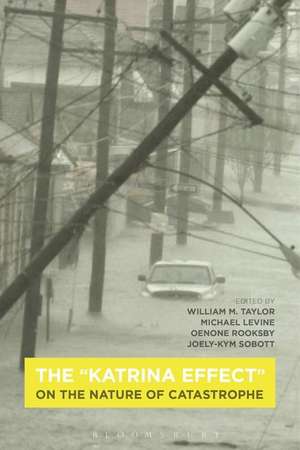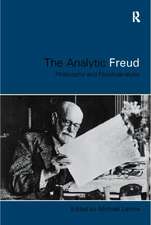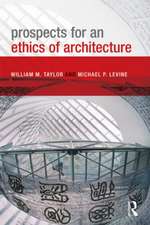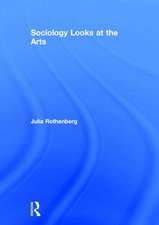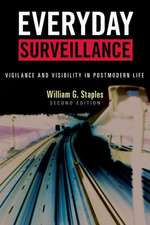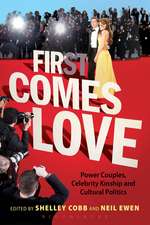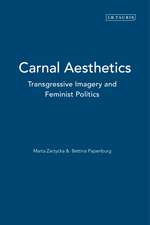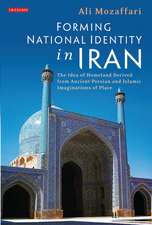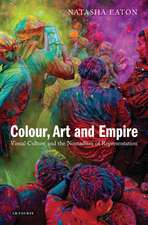The "Katrina Effect": On the Nature of Catastrophe
Editat de William M. Taylor, Michael P. Levine, Oenone Rooksby, Joely-Kym Sobotten Limba Engleză Paperback – 26 aug 2015
Preț: 186.22 lei
Preț vechi: 212.16 lei
-12% Nou
Puncte Express: 279
Preț estimativ în valută:
35.64€ • 36.82$ • 29.66£
35.64€ • 36.82$ • 29.66£
Carte disponibilă
Livrare economică 04-18 martie
Preluare comenzi: 021 569.72.76
Specificații
ISBN-13: 9781472595171
ISBN-10: 1472595173
Pagini: 408
Ilustrații: illustrations
Dimensiuni: 156 x 234 x 18 mm
Greutate: 0.73 kg
Editura: Bloomsbury Publishing
Colecția Bloomsbury Academic
Locul publicării:London, United Kingdom
ISBN-10: 1472595173
Pagini: 408
Ilustrații: illustrations
Dimensiuni: 156 x 234 x 18 mm
Greutate: 0.73 kg
Editura: Bloomsbury Publishing
Colecția Bloomsbury Academic
Locul publicării:London, United Kingdom
Caracteristici
Wide interdisciplinary appeal from a range of expert contributors working in: philosophy, critical theory, cultural theory and study, critical and human geography, architecture, urban planning and political economy
Notă biografică
William M. Taylor is Winthrop Professor of Architecture at the University of Western Australia, Australia.Michael P. Levine is Winthrop Professor of Philosophy at the University of Western Australia, Australia.Oenone Rooksby is a Research Associate at the University of Western Australia and a Graduate Architect at Officer Woods Architects, Australia. Joely-Kym Sobott is a Research Associate at the University of Western Australia, and teaches in the field of Architectural History and Theory.
Cuprins
List of IllustrationsNotes on ContributorsAcknowledgementsForewordWilliam M. Taylor and Michael P. Levine--Catastrophe and the "Katrina Effect"Reckoning: Disaster and JusticeNaomi Zack--The Effect of Katrina on Ideas About JusticeAnna Hartnell--New Orleans, 2005 and Port-au-Prince, 2010: Some Reflections on Trans-American Disaster in the Twenty-first CenturyRecomposing Katrina John Hannigan--"It's the end of the city (as we know it)": Katrina as Metaphor and Template for the "Urban Apocalypse"Richard Campanella--A Katrina LexiconJames O'Byrne--Bearing Witness: Journalists in the Eye of the StormDissembling: Sociology, Philosophy and EcologyJames Rhodes--Extending the "Urban Disaster" Paradigm: From New Orleans to Detroit (and Beyond?)Michael Levine--Witnessing Katrina: Morbid Curiosity and the Aesthetics of DisasterAccounting for DisasterGrahame Thompson--Post-Katrina and Post-Financial Crises: Competing Logics of Risk, Uncertainty, and Security Michael Faure--Shifts in Compensating Victims of Disasters after KatrinaTabula rasa: Urbanism and ArchitectureChristine Boyer--Katrina Effect: The Ruination of New Orleans and the Planners of InjusticeWilliam M. Taylor--Architecture after Katrina: Lessons from the Past or Designs for Someone Else's Future?Jeffry Diefendorf--Historic Urban Catastrophes: Learning for the Future from Wartime DestructionMemory: forgetfulness and commemorationCraig Colten--Historic City with a Poor MemoryDavid Simpson--Natural and Man-Made: Memorializing Complex CausesBibliographyIndex
Recenzii
This well curated collection is as timely as it is sobering. It provides an urgently needed look into the fragile networks that hold societies together and that quickly unravel when a debilitated area is hit by calamity. By examining the political, technological, psychosocial, and material components of catastrophic natural events-or tragedy of the sort that climate change is bound to intensify-these essays force us to confront what otherwise staggers the mind. They demand that we be willing and able to think openly and honestly about the whole tangle of vulnerabilities that create the conditions for worst-case disaster scenarios.
The 'Katrina effect' describes the process by which the 2005 hurricane that devastated New Orleans became a central point of reference for larger critiques of existing social, political, and economic relations and structures. Katrina, the editors suggest, became shorthand to describe the failure of institutions, leaders, and policies in a variety of contexts and for the reckoning and debates that followed those failures, both in the US and abroad. This excellent collection of 14 essays probes the 'Katrina effect' from a variety of disciplinary perspectives. Contributions come from an international roster of historians, philosophers, sociologists, architects, urban planners, and journalists. The essays explore the impact of the disaster on New Orleans (the photo essay by local journalist James O'Byrne is especially noteworthy), but they also place the city and hurricane in larger contexts, including discussions of US urban policy, neoliberal economic policies, and the politics of memory. Several authors compare and contrast events in New Orleans with the situation in Port-au-Prince following the 2010 earthquake. The editors provide an excellent introduction. A valuable collection that will be of great interest to scholars in a range fields. Summing Up: Highly recommended. Upper-division undergraduates and above.
The 'Katrina effect' describes the process by which the 2005 hurricane that devastated New Orleans became a central point of reference for larger critiques of existing social, political, and economic relations and structures. Katrina, the editors suggest, became shorthand to describe the failure of institutions, leaders, and policies in a variety of contexts and for the reckoning and debates that followed those failures, both in the US and abroad. This excellent collection of 14 essays probes the 'Katrina effect' from a variety of disciplinary perspectives. Contributions come from an international roster of historians, philosophers, sociologists, architects, urban planners, and journalists. The essays explore the impact of the disaster on New Orleans (the photo essay by local journalist James O'Byrne is especially noteworthy), but they also place the city and hurricane in larger contexts, including discussions of US urban policy, neoliberal economic policies, and the politics of memory. Several authors compare and contrast events in New Orleans with the situation in Port-au-Prince following the 2010 earthquake. The editors provide an excellent introduction. A valuable collection that will be of great interest to scholars in a range fields. Summing Up: Highly recommended. Upper-division undergraduates and above.
